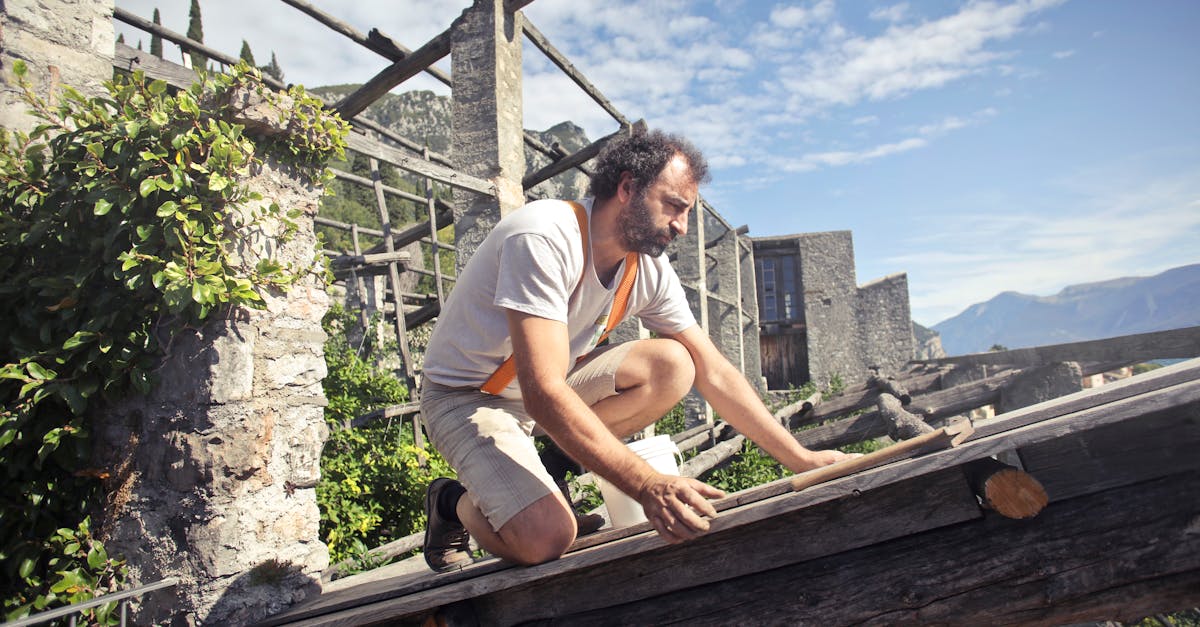Timeline and Scheduling for Commercial Roof Installation Projects

Table Of Contents
Weather Considerations
Weather significantly influences the scheduling of commercial roof installation projects. Rain, high winds, and extreme temperatures can hinder progress. Even mild weather can create challenges if it results in wet materials or affects the safety of workers. Understanding local climate patterns helps project managers anticipate potential delays and adjust timelines accordingly.
Seasonal variations also play a critical role in determining the best time for installation. In Australia, summer storms can lead to unpredictable interruptions. Therefore, planning installations in the early spring or late autumn often proves more reliable. This proactive approach not only facilitates smoother operations but also enhances overall project efficiency.
How Climate Affects Roofing Timelines
Seasonal weather patterns play a significant role in determining the timing of commercial roof installation projects. Rain during the winter months can cause delays, as wet conditions make it unsafe for crews to work on rooftops. High temperatures in summer can also impact construction schedules, as excessive heat can create dangerous working environments and affect materials, particularly asphalt and adhesives. Therefore, careful consideration of local climate conditions is crucial when planning an installation timeline.
Geographical location greatly influences the planning process. Areas prone to severe storms or high winds require extra precautions during specific seasons. In coastal regions, increased humidity and salt exposure can affect the lifespan and installation techniques of roofing materials. Each of these factors necessitates thorough risk assessment and proactive scheduling to mitigate disruptions, ensuring that projects stay on track and meet quality standards.
Project Milestones
Establishing key milestones is crucial to the successful execution of any commercial roof installation project. Each milestone marks a significant point in the timeline, influencing the overall progress and delivering a structured approach to the work. Common milestones include the completion of preliminary site assessments, material deliveries, the onset of installation, and final inspections. These checkpoints not only help in monitoring the advancement of the project but also assist in maintaining accountability among team members.
Tracking these milestones facilitates better resource allocation and scheduling. When critical phases are clearly defined, it becomes easier to manage time and budget constraints. For instance, unexpected delays can be quickly identified, allowing for adjustments to be made without significantly derailing the project. Additionally, achieving these milestones allows for regular updates to stakeholders, ensuring transparency and fostering trust throughout the process.
Critical Phases of Roof Installation
Understanding the critical phases of roof installation is essential for project success. The initial assessment involves evaluating the existing structure, identifying materials needed, and determining any necessary repairs. Following this, the planning phase sets out the timeline, allows for the ordering of materials, and allocates the required labour. Clear scheduling during this stage enables smooth transitions between phases.
During installation, specific steps must be adhered to ensure quality and durability. Removing the old roof carefully prevents damage to the underlying structure. Once the area is prepared, new materials can be laid, followed by sealing and ensuring waterproofing measures are implemented. Each of these steps requires diligence to meet safety standards, while also considering the weather to avoid delays and complications.
Communication with Stakeholders
Effective communication is vital for the success of any commercial roof installation project. Clear channels must be established early on to facilitate interactions among contractors, project managers, and clients. Regular updates about the progress and any changes in the timeline help to manage expectations and mitigate concerns. Stakeholders are more likely to remain engaged and supportive if they feel informed about the project's status.
Utilising various communication tools can enhance stakeholder engagement. Email updates, scheduled phone calls, and progress reports are useful methods to keep all parties informed. Incorporating visual aids like timelines or project maps can also provide clarity and context for the project's progression. Establishing a routine for these updates ensures that stakeholders remain informed and confident in the project's trajectory.
Keeping Clients Informed Throughout the Process
Maintaining open lines of communication with clients is vital throughout the roofing project. Regular updates on progress, any potential delays, and changes in scheduling foster trust and transparency. Providing clear timelines helps clients understand what to expect and when they can anticipate milestones being reached. Sharing reports that outline completed tasks and future steps can assist in managing their expectations.
Engaging clients during both routine check-ins and significant phases of the project establishes a collaborative atmosphere. Inviting feedback or addressing concerns promptly can prevent misunderstandings and enhance overall satisfaction. Utilising various communication channels, such as emails, phone calls, or in-person meetings, caters to different preferences. This ensures that all stakeholders remain aligned and informed as the installation progresses.
FAQS
What factors should be considered when scheduling a commercial roof installation?
Key factors include weather conditions, the type of roofing material, project milestones, and the availability of skilled labour.
How does weather impact the timeline for roof installation?
Weather plays a crucial role; extreme temperatures, rain, or high winds can delay installation. It's essential to monitor forecasts and plan accordingly.
What are the critical phases of a roof installation project?
The critical phases typically include site assessment, material delivery, installation of the roofing system, and final inspections.
How can I keep clients informed during the roofing project?
Regular communication is vital. This can be achieved through progress updates, scheduled meetings, and transparent reporting on any changes to the timeline.
What should I do if weather delays my roofing project?
If weather delays occur, it’s important to communicate with all stakeholders promptly, adjust the project timeline as necessary, and reschedule tasks according to the new plan.
Related Links
How to Ensure Quality Control During Commercial Roof InstallationCommon Challenges Faced During Commercial Roof Installations
The Impact of Climate on Commercial Roof Installation Techniques
Best Practices for Safety in Commercial Roof Installation
The Role of Weather Considerations in Commercial Roof Installation
Choosing the Right Materials for Commercial Roofing Installation
Understanding Building Codes for Commercial Roof Installations